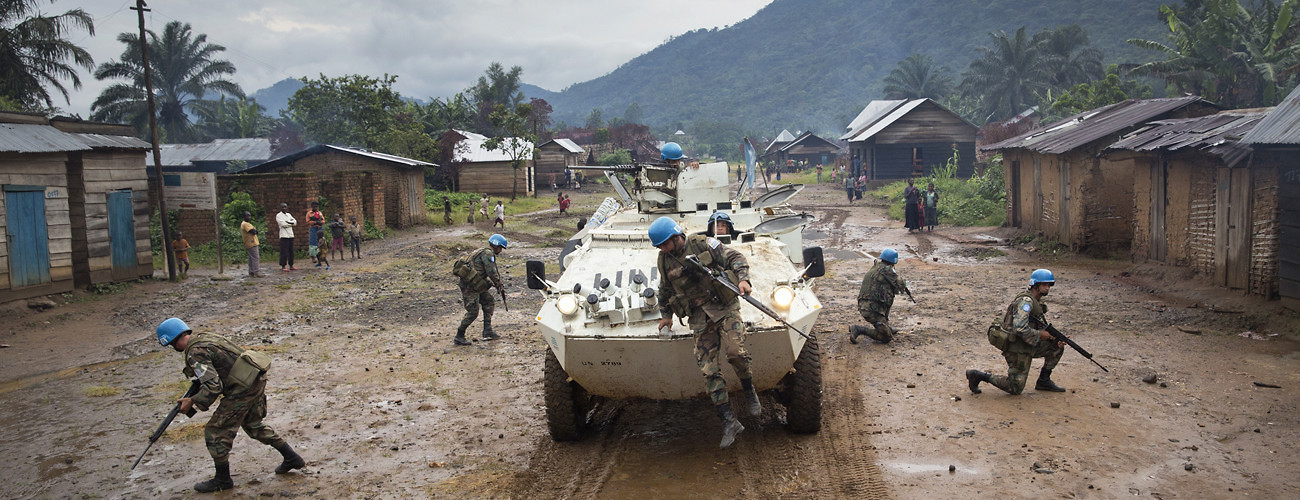Uruguayan peacekeepers in the UN mission in the Democratic Republic of the Congo patrol the town of Pinga, in North Kivu Province, on December 4, 2013. UN Photo/Sylvain Liechti.
A surge in South Sudan and a new operation in the Central African Republic will bring UN peacekeeping deployments—and the UN peacekeeping budget—to unprecedented levels. How does the UN finance its peacekeeping missions? And how can it use that financing system in a better way to get the personnel and equipment it needs for all of its missions?
This report explores how UN financing mechanisms could incentivize timely state contributions of highly effective peacekeeping units willing to make full use of their capabilities. After reviewing the budget system and the disbursements made from it, the study identifies weaknesses in the financial incentive structure for troop- and police-contributing countries—from the way personnel and equipment costs are reimbursed to the structural obstacles preventing the UN from fully leveraging its resources to incentivize timely and effective contributions from states.
The report makes six recommendations for improving the incentive structure that UN peacekeeping financing mechanisms create for troop- and police-contributing countries:
- Complete the current process for revising the uniformed personnel cost reimbursement rate.
- Introduce a readiness premium.
- Address financial disincentives to using major equipment items.
- Modestly harness procurement expenditure to build support for participation in peacekeeping.
- Implement a pilot project on unit-based reimbursement.
- Recognize opportunities to alleviate the politicization of peacekeeping financing debates.








